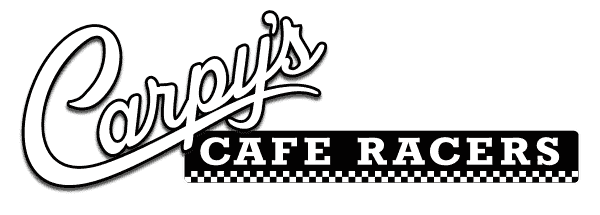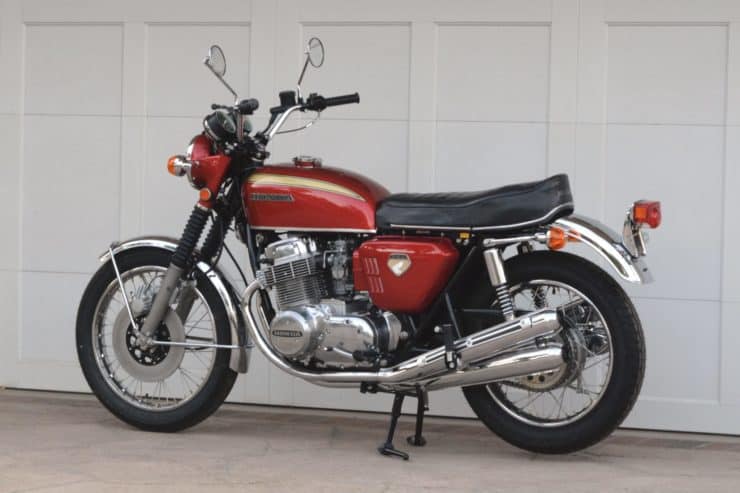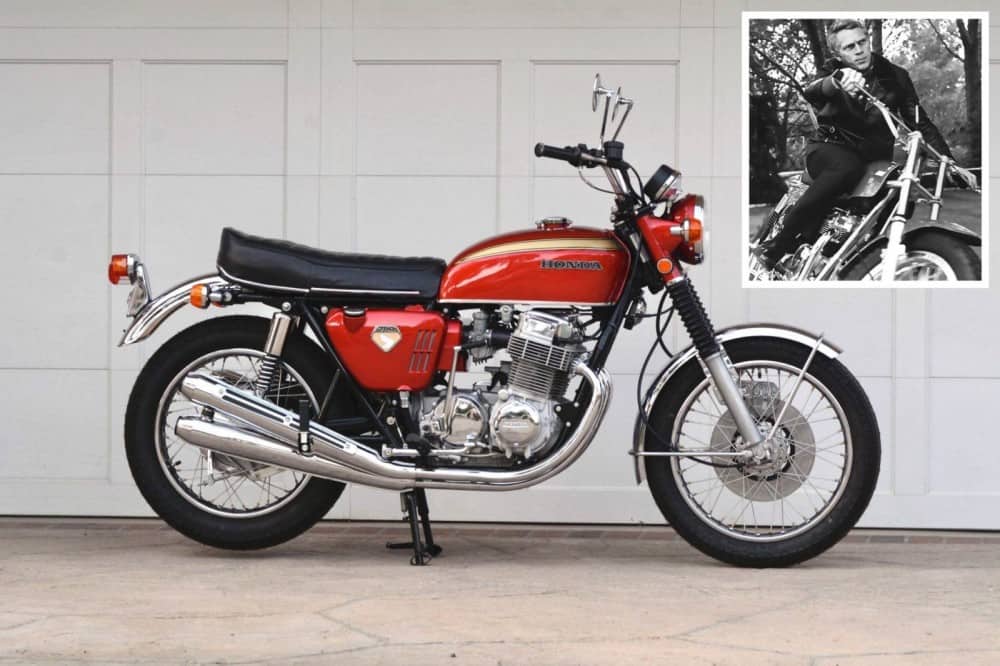No products in the cart.
Steve McQueen’s 1969 “Sandcast” CB750 Honda SOHC up for Grabs
18
Apr
This is a rare “Sandcast” 1969 Honda CB750 “Sandcast” that’s historically significant for two reasons, firstly it was the world’s first “superbike” and secondly it was bought new by Steve McQueen through his production company Solar Productions.
For those who may not know about this 500 pounds of Iconic Motorcycling Mastery, here is a small run down of the inline four Japanese History.
Having captured five consecutive championship titles in the historic 1966 World Grand Prix Road Racing Series, Honda decided to withdraw from the World GP circuit beginning the very next season. Upon that announcement, the company turned toward its primary target; the development of high-performance consumer machines. Thus it would achieve through the application of technology obtained in road racing.
Honda was in those days exporting more than half of its Japanese-made motorcycles. The company, however, did not offer large-displacement sports bikes, even though they were in great demand in developed countries such as the U.S. Moreover, sales of Honda motorcycles in America had begun to drop in 1966. Accordingly, American Honda had been asking for the development of new products.
The Dream CB450 was released in 1965 as a high-performance bike. Featuring a two-cylinder DOHC engine, it had been created at the request of American Honda, which wanted a higher-class version of its predecessor, the 305 cc CB77. Yoshiro Harada, who was in charge of the development project, reflected on the product’s history.
“In 1960,” he recalled, “the U.S. market for large motorcycles was approximately 60,000 units annually. Of these, most were imports from British makers. The Japanese market was comparatively much smaller, with monthly sales of several hundred units. But through our understanding of the situation we decided to develop a 450-cc bike, specifically a mass-production model, that could be sold in the U.S. as well as Japan.”
The CB450 sold relatively well, but it did not win acceptance as a major product. The majority of American riders, it seemed, did not judge motorcycles simply by how fast they could go. They also wanted responsive torque performance so that they could get the power they needed without downshifting. For many local riders, motorcycles represented a means of recreation and relaxation rather than rocket-sled performance.
Harada visited the U.S. around the summer of 1967 to observe the CB450’s impact in local markets. He even went so far as to detail the machine’s superior performance to the staff at American Honda, telling them it was even better than the 650 cc models by Norton and Triumph. However, they did not see the point in riding a 450 cc bike. Instead, they simply held to the belief that “bigger was better.”
The 650 cc displacement size was the largest to be found in Japan, yet these bikes accounted for only a few percentage points in the overall market. Harada therefore decided to develop a bigger model, as an obvious nod to the U.S. market. However, the request given by American Honda, ‘”the bigger the better,” seemed quite vague to him. Based on that advice alone, it would be difficult for Harada to determine the right displacement.
It was then that Harada learned from a reliable source that Britain’s Triumph was developing a high-performance model with a 3-cylinder 750 cc engine. This bit of news determined the engine specification. By October 1967, the outline for Honda’s new larger cc model had been defined: it would be driven by a 750 cc engine having a maximum output of 67 horsepower (one more than Harley-Davidson’s 1300 cc unit, whose maximum output was 66 horsepower).
A team of about twenty members was assembled on behalf of the development project in February 1968. The design of the CB750 FOUR had officially begun. However, Honda was already the industry’s leading producer of motorcycles, thanks to the popularity of its classic Super Cub. By introducing the CB750 FOUR, the company planned to become the world’s top manufacturer in terms of quality as well as volume. This model’s competition, however, would be formidable, since the pack included comparable models from Triumph, BMW, and Harley. Therefore, the new Honda would have to offer a superior level of performance and reliability in order to lead the field.
A 4-cylinder, four-muffler engine structure was to be the basis for design so that riders in every market could immediately associate the bike with the stunning performance of Grand Prix machines. Moreover, the handlebar position would be elevated – popular among American riders – to emphasize the bike’s dynamic, “wild” image. As Honda’s first mass-production model with a large powerplant, the CB750 employed various technologies designed to ensure high production volume and easier maintenance for the owner.
Integrating Design with Human Engineering
The objective of Honda’s basic development plan was to make long-range, high-speed touring safer and more comfortable, while achieving superior output. Therefore, the emerging science of human engineering – called “ergonomics” – was to be incorporated structurally, right down to the finest detail.
To facilitate the collaborative process among design engineers and production personnel, common engineering targets were established for product development. These included the following:
[1] Ensure stability during high-speed cruising (between 140 and 160 km/h) on highways, yet retain an ample margin of output for effective maneuvering in traffic.[2] Provide a braking system that is reliable and resistant to high loads by anticipating frequent rapid decelerations from high speeds.
[3] Minimize vibration and noise in order to reduce rider fatigue during long-range cruising. Provide an ideal riding position for comfort and the proper operation of controls based on human-engineering principles, and design the mechanisms so that the rider can easily learn how to operate them.
[4] Ensure that various ancillary devices, such as lights and instruments, are large and reliable. They must be designed to help the rider make sound judgments and ensure sufficient visibility for surrounding vehicles.
[5] Extend the service life for each device and ensure that it provides for easy maintenance and servicing.
[6] Create original designs that also are easy to mass produce by utilizing newer, better materials and production technologies. This applies particularly to cutting-edge surface-treatment technologies.
The satisfaction of these requirements meant that the team would have to utilize the vast reserves of engineering information Honda had accrued in the manufacture of Grand Prix machines. Moreover, computer systems would be introduced in order to streamline the various steps involved in development. However, computerization ultimately did more than that. It increased the efficiency of numerous development tasks, including plan modification in the prototype phase, design changes, hardware modifications, and testing. It even reduced the time needed to plan a line for mass production of the CB750 FOUR.
The First Motorcycle to Offer Disc Brakes
Fortunately, Harada had come across some after-market disc brakes in a motorcycle accessory outlet during his trip to the U.S., and they had proved effective in the CB450. As a result, he immediately visited Lockhart, the developer and manufacturer. After consulting with the supplier’s staff regarding the ideal design, Harada left the company with a set of their products. He secretly believed the new model they were going to develop might offer an opportunity to adopt disc brakes.
The day of the 1966 Tokyo Motor Show, scheduled for October, was fast approaching. However, Harada was still unable to make up his mind. Therefore, he brought two different brake specifications to Soichiro Honda and asked for some advice.
“We’ve designed two separate specifications having different braking systems,” he told Mr. Honda. “One uses conventional drum brakes and the other had disc brakes. Of the two, the disc-brake specification had only recently been developed, so it will need more tests. If disc brakes are adopted, we aren’t sure we can meet next spring’s completion target.”
Mr. Honda’s reply, though, was simple and direct: “Well, of course we’ll have to go with disc brakes.”
The CB750 FOUR was a hit at the Tokyo Motor Show, flashing its big disc brakes to throngs of admirers. Rave reviews began pouring in.
However, immediately following the show, many hours were spent analyzing the remaining problems. Before the model’s commercial launch issues that needed to be solved included increased wear of pads and noise in the brake pads, problems that were generally associated with disc mechanisms. They had to be solved in order to “achieve higher power while maintaining safety,” which was a key requirement in the development of the CB750 FOUR.
Mr. Honda, in his reply to a question from an engineer, explained Honda’s objectives in developing the CB750 in the January 1969 issue of the company newsletter (No. 124):
“When I went to Switzerland last June,” he said, “a policemen on a white police motorcycle came into the park where we were. He then got off his bike. I was watching it, thinking what a small motorcycle he was riding. I was amazed to find it was a Triumph 750 cc. So, actually the motorcycle was fairly big, but it looked small since the policeman was so big. [Laughs] I knew then that our bikes wouldn’t sell in foreign markets if we kept building them according to our Japanese perceptions. That’s why I suddenly became enthusiastic about this, and it’s why I started telling them to develop a bigger model as soon as possible.”
The CB750 FOUR was released in the U.S. in January 1969. That year, Honda held its first U.S. dealer meeting in Las Vegas, Nevada, a gathering of motorcycle dealers from across North America. The meeting’s objective was to motivate sales, which had been sluggish since 1966. As a strategic move prior to the coming spring season, the meeting was also attended by company representatives from Japan, including Soichiro Honda himself. The event’s true highlight was the introduction of the CB750 FOUR and other new models such as the Z50 and SL350.
“A retail price of $1,495 was announced by American Honda’s President Kihachiro Kawashima at the Vegas meeting,” Harada remembered. “Since large bikes were selling for between $2,800 and $4,000 in the U.S. at that time, all 2,000 dealers burst into thunderous applause when they heard its price. I’ve even heard that the machine fetched a premium as soon as it was on the market, selling for $1,800 to $2,000.”
Honda was soon deluged with orders for the CB750 FOUR, and the initial production forecast of 1,500 units a year became a monthly figure. Even that, however, was not enough, so the number jumped to 3,000 units.
Employing an Idle Facility to Produce a Large Motorcycle
Saitama Factory (currently Wako Plant) and Hamamatsu Factory were in 1969 selected to produce the CB750 FOUR’s engine and body, respectively. American Honda sent two engineers to Saitama Factory to join the staff for a series of tests, in which 300 items were checked from the user’s perspective. Honda Motor had high expectations for the exportation of the CB750 FOUR which was believed to be a strategically important bike for increasing the sales of other Honda models on the U.S. market.
This was Honda’s first attempt to market a big bike, and therefore it would be hard to forecast sales accurately. For that reason each plant decided to make effective use of idle production facilities, normally used for power products. This would serve to minimize the company’s overall investment. Modifications and overhauling, however, would be needed before their equipment could be used to build the CB750.
Honda’s previous models used a spilt-type, press-fit crankshaft having a needle bearing. However, the four-cylinder powerplant in the CB750 FOUR employed an integrated crankshaft and metal bearing. At Saitama Factory, the staff wracked their brains trying to identify the right machining equipment and line configuration to produce a part they had no experience making. They even visited automobile manufacturers in order to acquire some knowledge they could use to plan the line.
Efficiency on the line was poor initially, and as a result the production volume was at most five units per day. However, the machine became an instant smash hit, bringing tears of joy to everyone involved with the CB750’s creation. The initial production forecast of 25 units per day was pushed up to over 100 units. Back orders piled up as a result of this explosive, yet completely unexpected sales activity. Soon, the production of sand-molded crankcases, for which the factory did not have a dedicated machine, could no longer meet the rate required for mass production. In response, the entire crankcase production facility was upgraded to adopt the metal die-cast type. The line was gradually enhanced as production volume increased. However, every time the volume was adjusted, additional employees would be mobilized to run a temporary line. Everything had to be accelerated in order to produce such a number of bikes at Honda’s level of quality. Ultimately, though, the production of engines and bodies was transferred to Suzuka Factory – in July and October 1971, respectively – as part of the company’s endeavor to satisfy customer demand.
Suzuka Factory was then building the CB500, using a production line within its automobile plant. However, there were problems with this facility, including a restrictively narrow corridor along the line that hindered the smooth flow of parts. Therefore, with the assumption of CB750 Four production, the factory took a long-term view and changed the L-shape line for body assembly to a straight-line configuration. The move offered a better work environment and vast improvements in employee safety.
The organizational structure and operator training were improved, too. To that end, a dedicated organization was formed for the production of the CB750 FOUR by gathering selected personnel from the Honda 1300 and TN lines. The resulting vacancies on those lines were then filled by personnel from the factory’s auto plant. Those assigned to the motorcycle production line were then given orientation concerning the major differences from automobile production, particularly with regard to the prevention of damage to the product’s exterior. Accordingly, the line started up on schedule, with all cost and quality objectives satisfied.
Creating the Nanahan Boom
Honda had succeeded again, bringing other Japanese manufacturers into the arena with sports bikes featuring large, 750-cc engines. Therefore, it is no exaggeration to state that the Honda CB750 FOUR was a pioneer model in that regard. In fact, it gave birth to a new category known in Japan as “Nanahan*1.” Yet the Honda model, with its decidedly high-performance intentions, also fared very well on the racing circuit.
The in-house racing team at Honda R&D brought their CB750 Fours to compete in the Suzuka 10-Hour Endurance Race scheduled to be held in August 1969, soon after the model’s commercial launch. Honda dominated the race with a one-two finish by Blue Helmet MSC. The team of Morio Sumiya and Tetsuya Hishiki took first place, while the pairing of Yoichi Oguma and Minoru Sato came in a close second.
Veteran rider Dick Mann, meanwhile, streaked to victory on his CB750 FOUR at the AMA Daytona 200-Mile Race in March 1970. It was a ride that sent customers throughout the States running to their Honda dealers. In reflecting their conviction that “bigger is better,” American riders soon wanted a bigger bike with an engine offering even larger displacement.
The American hunger for large bikes was enhanced with the 1972 launch of Kawasaki’s hot new 900 cc ZI. Forced to develop a more appealing sport bike with a larger engine, Honda launched its 999 cc Gold Wing GL1000 in the American market. The units were initially exported from Japan, but as demand grew production switched to Honda of America Manufacturing (HAM). In May 1980, the first U.S.-made GL1100 machine rolled off the line. It was very well received in the U.S., becoming a major force in the growth of local production activities.
Note:
*1 Nanahan: Meaning 750 in Japanese, the term was used by the development staff to maintain the confidentiality of their new model. Nanahan later became a popular term, and was widely used in magazine circles.



